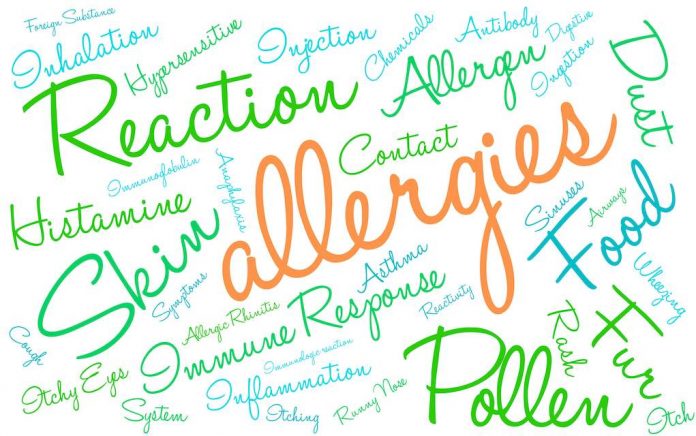
Chances are you hear the word “antihistamine” more than you do “histamine.” That’s probably because histamines are substances that can cause you some discomfort so you want to get rid of them—hence, you reach for antihistamines. Histamines are actually a good thing because they communicate messages from your body to your brain about allergens, and they also help with digestion. But when there is an accumulation of histamines, then you may develop histamine intolerance.
What is histamine intolerance?
Histamines are part of the body’s natural immune response. Once they are released they do their job, which is to cause an immediate and temporary inflammatory response that lets your body know about potential foreign attackers such as pollen or an infection. After that, enzymes usually break down the histamine so it doesn’t build up. In about 1 percent of the population, however, the histamine accumulates rather than breaks down properly, resulting in histamine intolerance.
Read about how to recognize inflammation in your body
Two enzymes play a significant role in breaking down histamine. Histamine N-methyltransferase (HMT) typically breaks down histamine in the central nervous system while diamine oxidase (DAO) works in the digestive tract. DAO is the main enzyme for breaking down histamine that you ingest. Therefore, if your body is deficient in DAO, you are likely to experience symptoms of histamine intolerance.
Symptoms of histamine intolerance
According to Amy Myers, MD, symptoms of histamine intolerance are wide and varied, and can include the following:
- Headaches or migraines
- Hypertension
- Dizziness or vertigo
- Difficulty falling asleep
- Fatigue
- Hives
- Flushing
- Sneezing, nasal congestion, breathing difficulties
- Abnormal menstrual cycle
- Rapid heart rate or arrhythmia
- Anxiety
- Problems regulating body temperature
- Abdominal cramps
- Swollen tissues
- Nausea, vomiting
For example, you may have histamine intolerance if you experience unexplained headaches, a runny nose after eating avocados or bananas, frequent insomnia, or a flushed face after drinking red wine. These are just a few of the reactions people have if they are living with histamine intolerance.
Diagnosing histamine intolerance
Diagnosing histamine intolerance can be done in several ways. A blood test for histamine and DAO levels can tell you and your doctor whether you have a high ratio of histamine to DAO. If you do, it indicates you are eating too much histamine and you lack sufficient DAO to break it down.
Another approach is to follow a diet low in histamine (see the food list) and take a DAO supplement at each meal. If you get symptom relief, this suggests you have low DAO levels.
Finally, you can try an elimination diet. First, stop eating all foods high in histamine or that release histamine for 30 days. Then reintroduce one food at a time: include the food in your diet for three days and see how you feel. If you experience symptoms, then you may be histamine intolerant. Stop that food, go back to your histamine-free diet for three days, then reintroduce another food. Repeat this cycle for as many foods as you wish to try.
Causes of high histamine levels
Histamine levels can rise and accumulate in your body for several reasons.
- Allergies (true allergy, which is an immunoglobulin E reaction)
- Leaky gut
- Gastrointestinal bleeding
- Bacterial overgrowth in your small intestine
- A deficiency of DAO
- Eating histamine-rich foods
Read about natural treatments for allergies
Food and histamine levels
Although your body naturally produces histamine, various foods also either contain histamine, cause histamine to be released, or block the enzyme (DAO) that breaks down histamine. If you have histamine intolerance, therefore, you should avoid certain foods until you can identify the underlying cause of your intolerance. With that in mind, let’s look at the foods you should avoid as well as those you can enjoy if you are histamine intolerant.
Foods high in histamine
Anyone who is histamine intolerant should avoid the following foods:
- Fermented foods such as vinegar, sauerkraut, kefir, yogurt, soy sauce, kombucha
- Fermented alcohol beverages, especially beer, champagne, and wine
- Foods that contain vinegar, such as mayonnaise, olive, pickles
- Dried fruits, such as raisins, figs, and prunes
- Most citrus fruits
- Aged cheeses
- Processed/cured meats, such as pepperoni, hot dogs, bacon, and salami
- Certain vegetables: avocados, eggplant, spinach, and tomatoes
- Smoked fish and certain fish, such as anchovies, mackerel, mahi-mahi, tuna
- Soured foods, such as sour cream, buttermilk
- Certain nuts, such as cashews, peanuts, and walnuts
Foods that cause the release of histamine also should be avoided. Some of them are also foods that are high in histamine.
Alcohol, bananas, chocolate, milk (cow’s), nuts, papaya, pineapple, shellfish, strawberries, tomatoes, and wheat germ. You should also avoid foods that contain dyes or artificial preservatives.
Another category of foods to avoid are those that block DAO, the enzyme that breaks down histamine. These include alcohol, energy drinks, and tea (black, green, and mate).
Foods low in histamine
One of the most important things to remember about eating foods low in histamine is freshness. Foods that have been processed, fermented, and/or contain artificial preservatives and dyes are not low in histamine. Low histamine foods include:
- Freshly caught fish
- Freshly cooked meat or poultry
- Gluten-free grains and cereals, such as amaranth, corn, millet, rice, quinoa, and teff
- Pure peanut butter
- Fresh fruits, such as apples, cantaloupe and honeydew, grapes, kiwi, mangos, pears, and watermelon
- Most fresh vegetables (except eggplant, spinach, and tomatoes)
- Non-dairy beverages, such as coconut, rice, hemp, almond, and cashew milks
- Leafy herbs
- Herbal teas
- Cooked eggs
- Coconut or olive oil
Bottom line
If you believe you may be histamine intolerant, you can try an elimination diet or talk to your healthcare provider. With dietary changes or addressing the underlying cause of your symptoms, you can get relief.
Sources
Maintz L, Novak N. Histamine and histamine intolerance. The American Journal of Clinical Nutrition 2007 May; 85(5): 1185-96
Myers A. Everything you need to know about histamine intolerance. Amy Myers MD 2019 Sep 6










